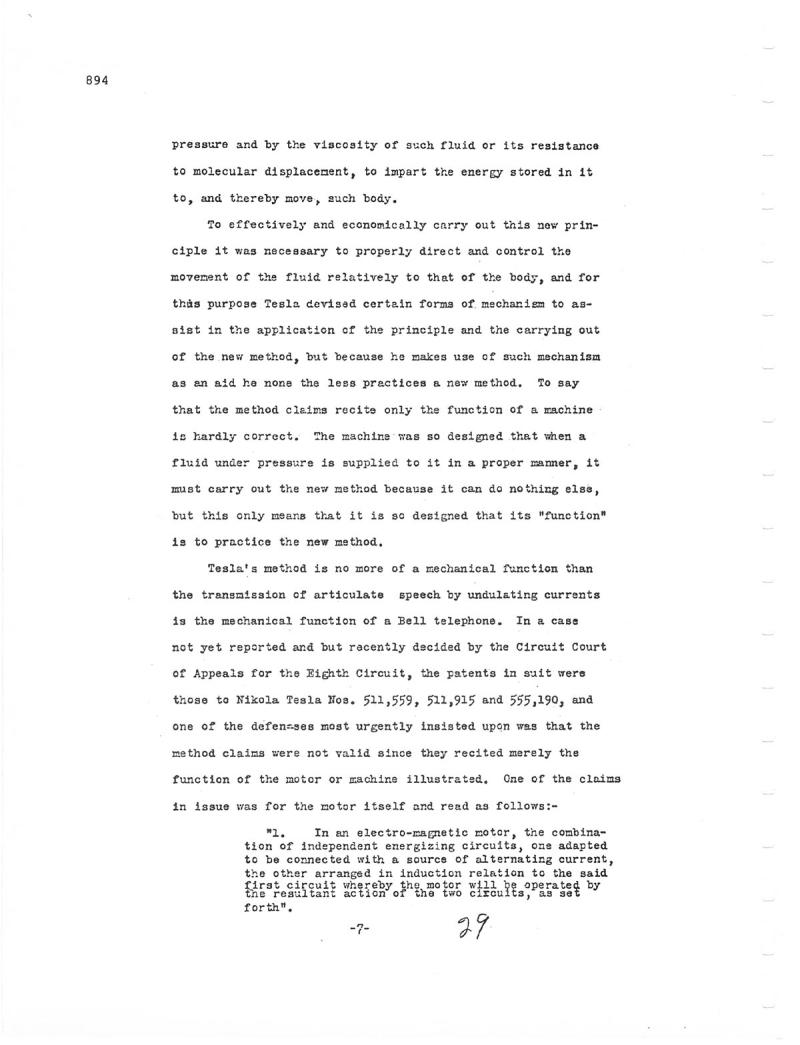
Nikola Tesla Patents
Nikola Tesla U.S. Patent 1,061,206 - Turbine Patent Wrapper Page 30
894 pressure and by the viscosity of such fluid or its resistance to molecular displacement, to impart the energy stored in it to, and thereby move, such body. To effectively and economically carry out this new principle it was necessary to properly direct and control the movement of the fluid relatively to that of the body, and for this purpose Tesla devised certain forms of mechanism to assist in the application of the principle and the carrying out of the new method, but because he makes use of such mechanism as an aid he none the less practices a new method. To say that the method claims recite only the function of a machine is hardly correct. The machine was so designed that when a fluid under pressure is supplied to it in a proper manner, it must carry out the new method because it can do nothing else, but this only means that it is so designed that its "function" is to practice the new method. Tesla's method is no more of a mechanical function than the transmission of articulate speech by undulating currents is the mechanical function of a Bell telephone. In a case not yet reported and but recently decided by the Circuit Court of Appeals for the Eighth Circuit, the patents in suit were those to Nikola Tesla Nos. 511,559, 511,915 and 555,190, and one of the defen-ses most urgently insisted upon was that the method claims were not valid since they recited merely the function of the motor or machine illustrated. One of the claims in issue was for the motor itself and read as follows:- "1. In an electro-magnetic motor, the combination of independent energizing circuits, one adapted to be connected with a source of alternating current, the other arranged in induction relation to the said first circuit whereby the motor will be operated by the resultant action of the two circuits, as set forth". 29 -7
